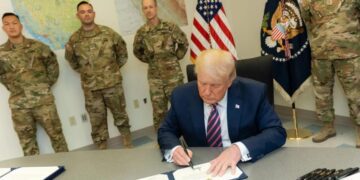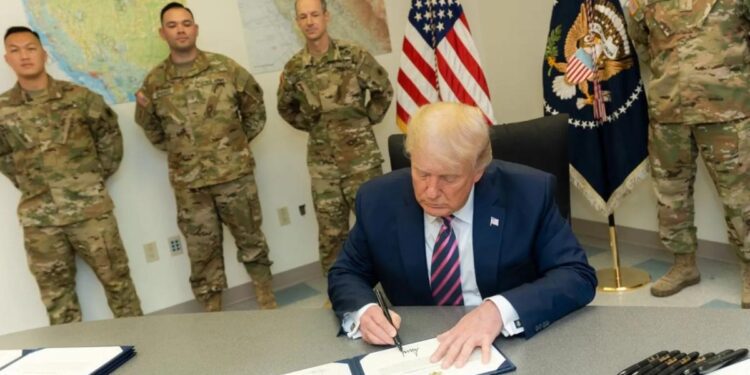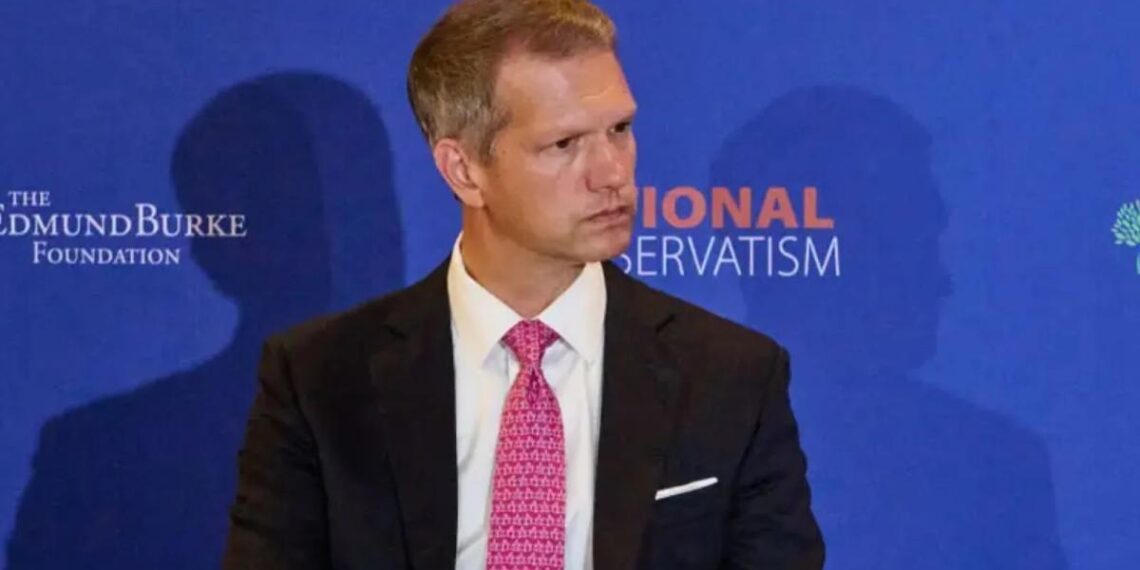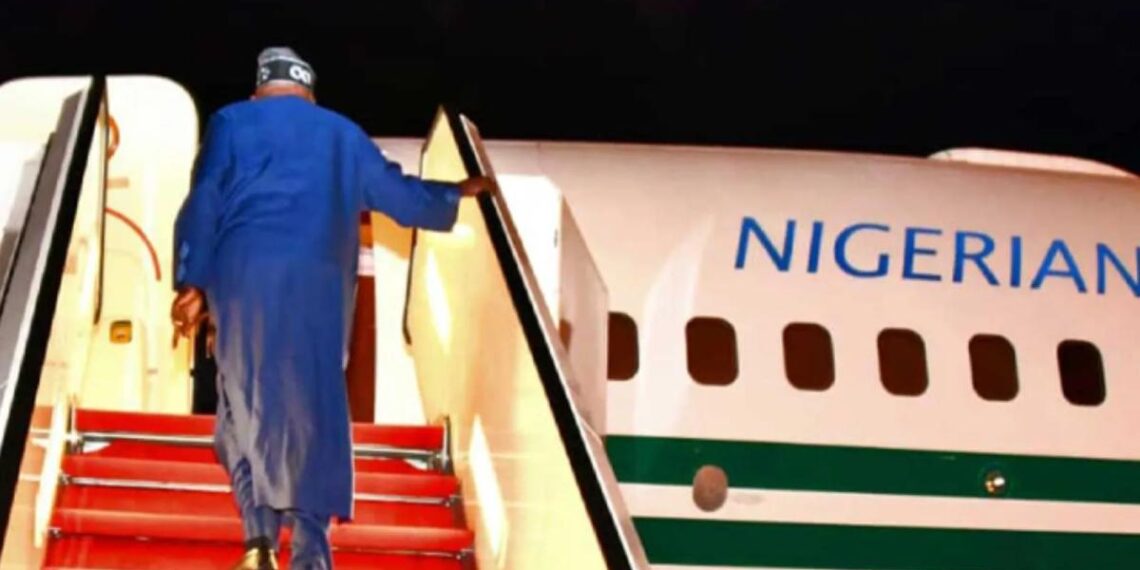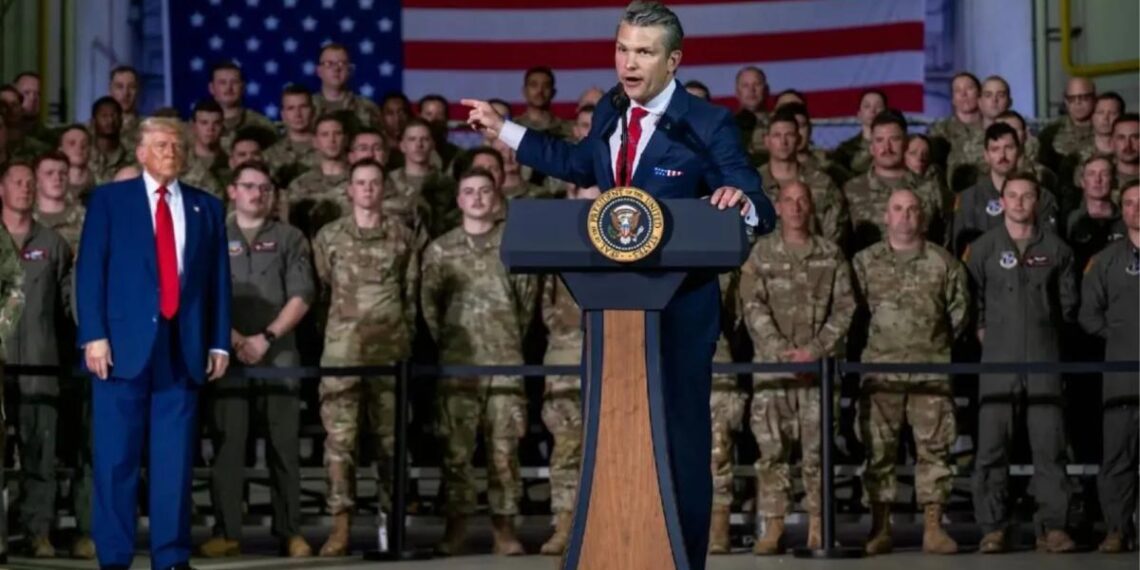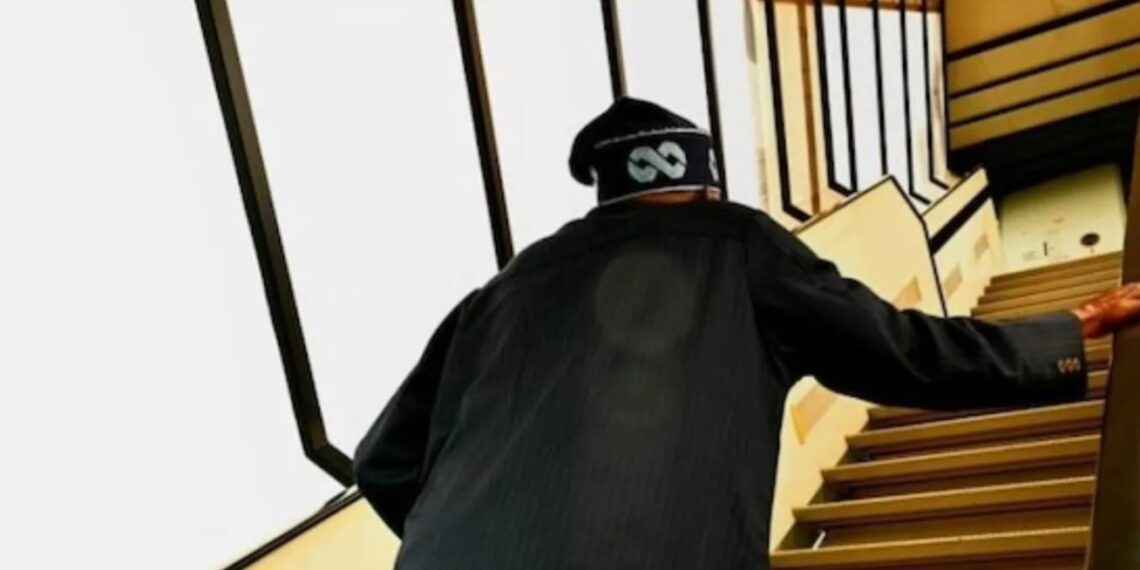The U.S. military has reportedly drawn up contingency plans for potential strikes on Nigeria, following President Donald Trump’s directive to prepare for action over what many have dismissed as a false claim of Christian genocide.
According to a Wednesday report by The New York Times, the U.S. Africa Command (AFRICOM) submitted several operational options to the Department of War at the request of Secretary Pete Hegseth.
The plans are said to outline three tiers of military response — heavy, medium, and light — allowing for flexible escalation depending on developments.
Military officials cited by The New York Times explained that the “heavy option” represents the most aggressive course, involving large-scale air and ground operations if authorized.
It includes deploying an aircraft carrier group to the Gulf of Guinea, off Nigeria’s coast, and conducting airstrikes using fighter jets or long-range bombers to hit targets deep in northern Nigeria.
For the medium approach, AFRICOM proposed drone strikes against militant camps, convoys, and vehicles in northern Nigeria.
US Predator and Reaper drones could hover for extended periods before striking, while intelligence assets would map targets’ movements to ensure precise operations, the report stated.
Officials also noted that the “light option” focuses on partner-enabled operations, where U.S. military and State Department personnel would support Nigerian forces targeting Boko Haram and other Islamist insurgents involved in attacks, kidnappings, and killings.
The report emphasized that the goal of these plans is to neutralize Islamist militants in northern Nigeria, protect Christian populations, and bring an end to the protracted insurgency in the region.
However, serious concerns have emerged regarding Nigeria’s sovereignty, potential civilian casualties, and diplomatic fallout should military action proceed without coordination with Abuja.
While the Department of War continues reviewing AFRICOM’s submissions, experts and officials have voiced alarm about the consequences of implementing any strike plan.
The New York Times noted that the violence in the Sahel region is complex, rooted in cultural, linguistic, and religious differences rather than a singular ideological cause.
In Nigeria’s Middle Belt, conflicts stem largely from disputes over land ownership and grazing rights between farmers and herders, making it difficult to isolate religious motives.
Sources told the paper that U.S. intervention would be limited without committing to a prolonged Iraq- or Afghanistan-style campaign.
“It would be a fiasco,” retired Army veteran Paul Eaton told The New York Times, adding that such actions would “cause shock and confusion rather than quell the conflict,” likening the effort to “pounding a pillow.”
The “heavy option” also faces practical hurdles, as deploying long-range bombers would require an aircraft carrier group in the Gulf of Guinea — a challenge given current naval constraints.
The New York Times reported that the U.S. Navy’s carrier fleet is already stretched thin. The Gerald R. Ford, its most advanced vessel, is being redirected from Europe to the southern Caribbean for Trump’s anti-drug cartel campaign, while other carriers remain engaged in the Pacific, Middle East, or maintenance.
Several defense officials warned that committing a carrier to operations off Nigeria’s coast does not align with current U.S. national security priorities.
The second option — drone strikes — also presents difficulties due to the absence of nearby U.S. bases. The withdrawal from Niger’s Agadez and Niamey drone facilities in August has limited America’s operational reach in West Africa.
This development follows President Trump’s accusation that Nigeria is conducting a Christian genocide, an allegation the Nigerian government has strongly denied.
